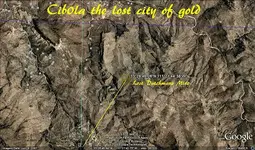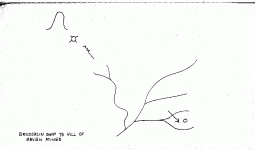1519 Hernan Cortes invades Mexico, completing his conquest of the Aztec empire in 1521 and establishing the colony of New Spain.
THE JOURNEY OF CABEZA DE VACA (1528-1536)
1528 Alvar Nuñez Cabeza de Vaca, survivor of an ill-fated attempt to conquer Florida and the southeast, is shipwrecked on Galveston Island off the Texas coast and begins his eight year odyssey as one of the first Europeans to set foot in the West.
1534 After living six years among the Indians of the Texas coast, Cabeza de Vaca and his three fellow survivors -- one an African slave named Esteban -- begin their travels across Texas and the Southwest into northern Mexico, protected by Cabeza's reputation as a healer and man of peace.
1536 Cabeza de Vaca and his companions meet a band of Spanish slave hunters near Culiacan on the Mexican west coast and make their way to Mexico City, where their adventure sparks interest in the mysterious lands to the north.
1538 Fray Marcos de Niza, a Franciscan friar, is sent to explore the lands to the north of Mexico, guided by Esteban, the African who had accompanied Cabeza de Vaca. Within a year, Marcos returns with news of a great city called Cibola, where Esteban was killed, which from a distance appeared to him "bigger than the city of Mexico."
1539 Hernando de Soto lands at Tampa Bay in Florida to begin his bloody expedition across the southeast.
THE CORONADO EXPEDITION (1540-1542)
1540 Francisco Vasquez de Coronado leads Mexico's invasion of the north with an expeditionary force of 300 conquistadors and more than one thousand Indian "allies." When they reach Cibola, they find not the promised metropolis but "a little, crowded village, looking as if it had been crumpled all up together." This is the Zuni Pueblo of Hawikuh, whose warriors answer with arrows when Coronado demands that they swear loyalty to his King. Within an hour, the Spaniards have overrun the pueblo, and over the next few weeks, they conquer the other Zunis in the region.
1540 Lopez de Cardenas, an officer in Coronado's army, sets off to investigate Hopi reports of a great river to the west of their lands. After a 20-day trek, Cardenas becomes the first white man to see the Colorado River from the rim of the Grand Canyon.
1540 Hernando de Alvarado, another Coronado officer, journies with a group of Cicuye Indians back to their homeland. Along the way Alvarado see the ancient mesa-top pueblo of the Acoma, and at Cicuye, on the Pecos River, he learns of wild "cattle" on a nearby plain, like those described by Cabeza de Vaca. Guided there by a Pawnee captive, whom he calls El Turco, Alvarado enters west Texas and sees a vast herd of buffalo. At the same time, he learns from El Turco of a place in the far north called Quivira, where there is an abundance of gold.
1540 Coronado moves his camp to the upper Rio Grande, where his soldiers confiscate one pueblo for winter quarters and loot the surrounding pueblos for supplies. During this operation, a Spaniard rapes an Indian woman, and when Coronado refuses to punish him, the Indians retaliate by stealing horses. Lopez de Cardenas attacks the thieves' pueblo, captures 200 men and methodically burns them all at the stake.
1541 Faced with an incipient uprising, Coronado orders an attack on Moho pueblo, a center of Indian resistance. His men are repulsed when they try to scale the walls, so they settle in for a seige that lasts from January through March. At last, when the Moho try to slip away, the Spaniards kill more than 200 men, women and children in a massacre that pacifies the region.
1541 Coronado sets out in April to investigate El Turco's tales of Quivira. Retracing Alvarado's path, he soon reaches the Texas plains, where there are "so many cattle that it would be impossible to estimate their number, since there was not a single day...that I lost sight of them." He continues for a month, unaware that El Turco is misleading him to the southeast in the hope that he can exhaust the Spaniards and escape. When Coronado discovers the deception, he turns north with 30 men, sending the rest back to their camp on the Rio Grande.
1541 De Soto's expedition crosses the Mississippi into Arkansas, where they are only 300 miles from Coronado as he advances through Kansas, though neither Spaniard is aware of the near-coincidence.
1541 Traveling by compass north across the Texas and Oklahoma panhandles, Coronado comes to the first Quivira settlement on the Arkansas River in early July, discovering a cluster of grass huts, not the opulent city El Turco had described. He continues to explore the region for a month, ranging as far north as the Smoky Hill River in central Kansas. Here torture forces El Turco to confess that he has been deceiving the Spaniards from the outset, and he is choked to death. In late August Coronado begins the long trek back to his camp on the upper Rio Grande, where he spends the winter.
1542 Coronado returns empty-handed to Mexico City in July, where he lives in the disgrace of failure until his death in 1544.
1542 De Soto's expedition circles back to the Mississippi, where De Soto himself dies. His troops then head west again into east Texas, but after months of wandering they return to the Mississippi and construct boats that carry them downriver into the Gulf and, they hope, eventually to Mexico.
1542 Juan Rodriguez Cabrillo is sent on a naval expedition up the California coastline. He sails into San Diego harbor, becoming the first European to enter California, though he finds that the Indians there have already heard that "men like us...bearded, clothed and armed...[are] killing many native Indians." Cabrillo goes on to chart the harbors at San Pedro and Santa Barbara. His expedition spends the winter on Santa Catalina Island, where Cabrillo dies.
1542 Under pressure from religious leaders, especially the Dominican friar Bartolome de Las Casas, Emperor Carlos V attempts to impose "New Laws" on the Spanish colonies, ending the encomienda system that gives settlers the right to Indian slave labor. In Mexico, the New Laws are denounced.
1543 The Cabrillo expedition continues under the command of chief pilot Bartoleme Ferrer, who discovers San Francisco Bay and pushes on to the Rogue River, north of the present border between California and Oregon, before turning back.
1543 The survivors of the De Soto expedition arrive in Mexico, confirming Coronado's report that there is no gold nor wealth among the people to the north.
1546 Spain's "New Laws" barring Indian enslavement are repealed at the insistence of New World colonists, who have developed a society and economy dependent on slave labor.
1552 Bartolome de Las Casa, the first priest ordained in the Western hemisphere and chief architect of the now-defunct "New Laws" against Indian enslavement, publishes Brief Relations of the Destruction of the Indies, which provides many gruesome examples of the colonists' treatment of Indians.
1579 Sir Francis Drake sails into a small harbor north of San Francisco Bay to repair his ship, The Golden Hind, after a year of marauding along the Mexican coast; he claims the surrounding territory for Queen Elizabeth I and England.
THE CREATION OF NEW MEXICO (1598-1607)
1598 Don Juan Oñate leaves Chihuahua to establish the colony of New Mexico, leading a multicultural band of 500 settlers. Advancing up the Rio Grande, he establishes his headquarters at a confiscated pueblo north of present-day Santa Fe, which he names San Juan, creating the first permanent European settlement in the American West.
1599 Oñate retaliates for an Acoma attack on his colony by sending a small force against their nearly-impregnable mesa-top pueblo. Despite the tactical and numerical odds, the Spaniards destroy Acoma, killing 800 men, women and children, and taking more than 500 captive. To make the Acoma living reminders of the need for obedience, Oñate condemns all the male captives older than twenty-five to have one foot cut off.
1599 On Christmas Eve, Oñate declares the conquest of New Mexico complete and establishes his territorial capital near the San Juan pueblo at a settlement he names San Gabriel.
1601 Oñate returns to New Mexico after a six-month search for the fabled city of Quivira in Kansas; on his return he finds the San Gabriel colony nearly deserted.
1602 Sebastian Vizcaino sails along the California coastline in search of a sea-lane to Oñate's colony; he discovers Monterey Bay but no link to the interior.
1603 Oñate explores westward through Arizona to the Gulf of California, searching for gold or silver to capitalize his colony; he returns empty-handed, but stops at El Morro, a massive rock formation near the Hawikuh Zuni pueblo, to add his name to the hundreds of Indian writings already scrached into the stone: "There passed by here the Adelantado Don Juan de Oñate, from the discovery of the Sea of the South, the 16th of April of 1605."
1605 By this time, diseases brought to North America by Europeans have devastated tribes across the continent, with losses in New Spain estimated as high as 90 percent.
1607 Oñate resigns as governor of New Mexico, warning officials in Mexico that the colony will be abandoned if reinforcements do not arrive within the year.
1607 Jamestown founded in Virginia, first permanent English colony on the continent.
1608 Quebec founded in Canada, first permanent French colony on the continent.
1610 Franciscan claims of success in converting the Indians of New Mexico persuade Mexican officials to maintain their colony there rather than abandon Christian souls to damnation. Pedro de Peralta is named governor of the colony and establishes Santa Fe as its new capital. For his Governor's Palace on the new town plaza, he does not recreate the architecture of Spain but instead adopts the style and materials of the pueblos.
1620 English Pilgrims land at Plymouth, Massachusetts.
1650 Horses stolen from the ranches of New Mexico begin to transform the culture of the Plains, enabling Native Americans to hunt buffalo more efficiently and to range farther in battle with their enemies. Within another generation the horse will spread from New Mexico through the region west of the Rocky Mountains to the tribes of the Northwest.



 "The way to solve the mystery of the Peralta Stone Maps is to follow the directions engraved right on them, “BUSCA EL MAPA,” Study the Maps, and then follow them to where you think they lead. When you have arrive at what you believe to be the end of the trail, you remove the original Heart insert from the cavity in the top Trail Map and """"((((insert the Latin Heart into the cavity))))"""" (This explains why the Heart Cavity was cut out in the upper Trail Map and the original Heart is removable. “BUSCA EL COAZON,” """"((((Study the “Latin Heart))))""""”. If you find the landmarks specified on the Latin Heart in the vicinity around you, """"YOU"""" ARE AT THE END OF THE TRAIL!"
"The way to solve the mystery of the Peralta Stone Maps is to follow the directions engraved right on them, “BUSCA EL MAPA,” Study the Maps, and then follow them to where you think they lead. When you have arrive at what you believe to be the end of the trail, you remove the original Heart insert from the cavity in the top Trail Map and """"((((insert the Latin Heart into the cavity))))"""" (This explains why the Heart Cavity was cut out in the upper Trail Map and the original Heart is removable. “BUSCA EL COAZON,” """"((((Study the “Latin Heart))))""""”. If you find the landmarks specified on the Latin Heart in the vicinity around you, """"YOU"""" ARE AT THE END OF THE TRAIL!"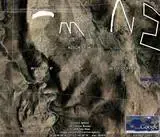
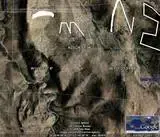
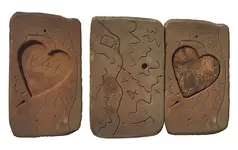
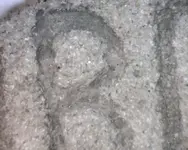

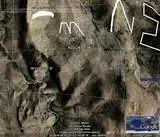
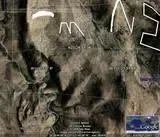
 Seven Caves of Cibola....... The desert region of southwestern United States known as the Four Corners has remarkable rock dwellings. People lived in open, natural caves that were artificial and were carved into the cliffs. Mesa Verde in Colorado is known for its terraced structures built into the cave. Canyon de Chelly, in Arizona, has artificial caves built into natural caves.
Seven Caves of Cibola....... The desert region of southwestern United States known as the Four Corners has remarkable rock dwellings. People lived in open, natural caves that were artificial and were carved into the cliffs. Mesa Verde in Colorado is known for its terraced structures built into the cave. Canyon de Chelly, in Arizona, has artificial caves built into natural caves.